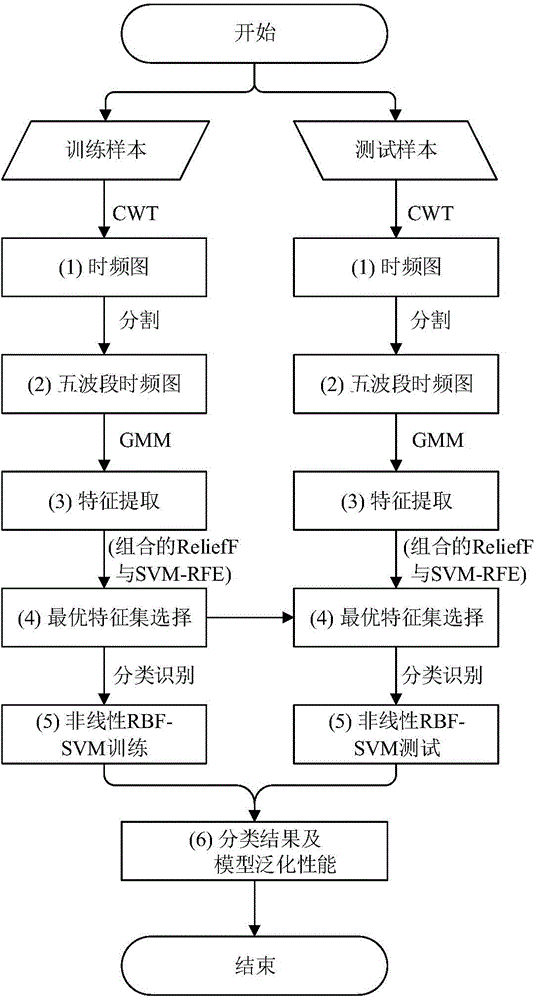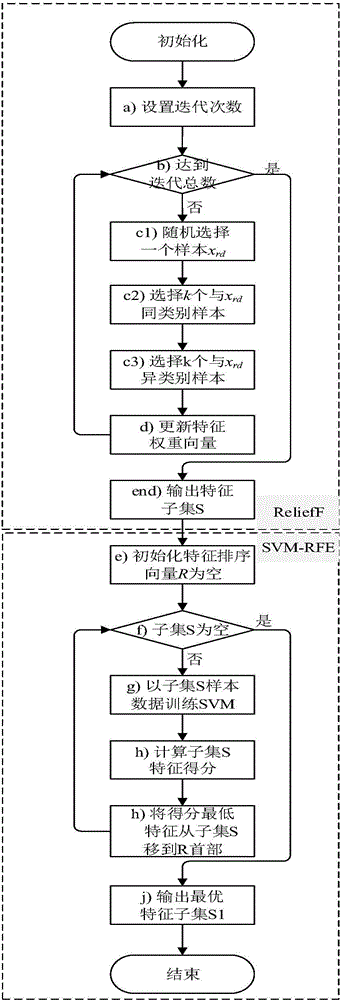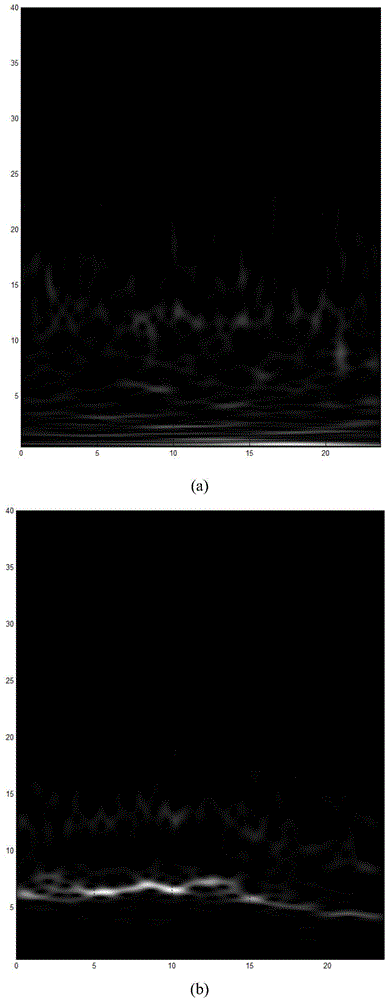Epileptic feature extraction and automatic identification method based on electroencephalogram signal
A technology of feature extraction and recognition methods, applied in character and pattern recognition, medical science, instruments, etc., can solve the problems of lack of correlation and redundancy, and achieve simple and effective methods, good classification effects, and good generalization performance Effect
- Summary
- Abstract
- Description
- Claims
- Application Information
AI Technical Summary
Problems solved by technology
Method used
Image
Examples
Embodiment Construction
[0030] The present invention will be further described in detail below in conjunction with the accompanying drawings and specific embodiments.
[0031] According to an embodiment of the present invention, a time-frequency analysis method is applied to the electroencephalogram signal to obtain a time-frequency diagram. The time-frequency diagram contains both the time information and the instantaneous frequency distribution information of the signal. For non-stationary signals, time-frequency analysis can better characterize signal characteristics than simple time-domain analysis or frequency-domain analysis. Based on the EEG time-frequency map, extract and identify the features that characterize epileptic EEG. figure 1 A flow chart of a method according to an embodiment of the present invention is shown, including:
[0032] First, apply the time-frequency analysis method to carry out time-frequency analysis to the EEG signal to obtain the signal time-frequency map (step (1))...
PUM
 Login to View More
Login to View More Abstract
Description
Claims
Application Information
 Login to View More
Login to View More - R&D
- Intellectual Property
- Life Sciences
- Materials
- Tech Scout
- Unparalleled Data Quality
- Higher Quality Content
- 60% Fewer Hallucinations
Browse by: Latest US Patents, China's latest patents, Technical Efficacy Thesaurus, Application Domain, Technology Topic, Popular Technical Reports.
© 2025 PatSnap. All rights reserved.Legal|Privacy policy|Modern Slavery Act Transparency Statement|Sitemap|About US| Contact US: help@patsnap.com



